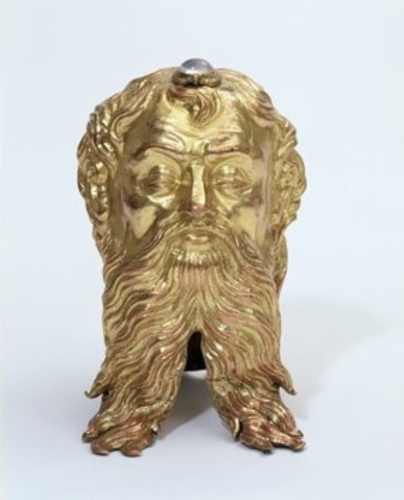The material remains of saints, including bones, body parts, hair, blood and personal belongings, were venerated by medieval Christians and continued to play a key role in Catholic devotion after the Reformation. Such ‘relics’ required appropriately lavish containers; reliquaries such as this naturalistic head of the Italian Saint Januarius, martyred around 305 AD, were made of precious metals and often adorned with valuable stones. Although the reliquary is now empty, the moonstone on the saint’s forehead may originally have provided a glimpse of its contents, allowing worshippers to view – but not touch – the relic inside.
© 2019 University of Cambridge and Fitzwilliam Museum











